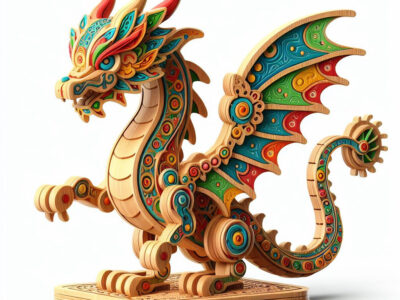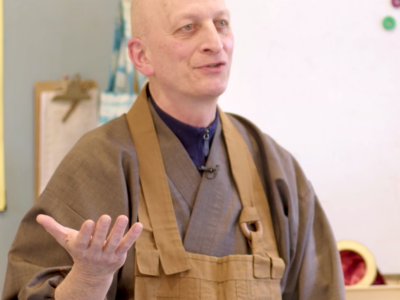Tea for Teachers
About This Resource
Details
For the complete, updated lesson, please open this Google Doc
Title: Tea for Teachers
Unit: Any/Taking our Seat
Grade Level: All
Duration: Initial 20-minute introduction; then 5 minutes once per week
Tags: Turning the wheel of the dharma, humility, beauty, tea, service, ceremony, reverence
Summary
This lesson was created at the Middle Way School of the Hudson Valley in 2021 and became incorporated into the weekly dharma assemblies. After students learned about tea, every week one student had a turn at bringing a cup of tea to their teacher before the story time began. This is a very popular ritual at the school.
Essential/Guiding Question(s):
Who teaches us? Why and how can we show our respect to our teachers?
And Then? Why is this important?
This lesson helps students develop a habit of respect for the process of receiving teachings, reciprocity, respect for elders. This eventually connects to the concept of lineage and the guru-shishya—learning from masters.
Lesson Objectives: Students will…
| Know | How to make a proper cup of tea and to serve it;
vocabulary: reciprocal, kalyanamitra (see definition below), steep, service, offering, master |
| Understand | The importance of showing gratitude to those who teach; the beauty of simple gestures; everyone can teach you something; positive meanings of the word “master” |
| Do | Think about reciprocity, develop a habit of showing gratitude for elders and others who teach and show that gratitude, cultivate a habit of respect |
ACTIVITY
Note: It’s best if this activity is introduced by someone other than the teacher, perhaps a teacher from another class, the head of school, a parent or other, because it is about making an offering to the teacher.
Teacher Prep:
Brew a pot of tea, prepare nice cups and saucers for each child, preferably not single use (often nice vintage or pre-owned ones can be found at thrift stores). Perhaps also put out flowers, a table cloth, and/or a nice little treat. Put effort into making it uplifted and special. Make sure to choose a simple herbal tea without caffeine: lemon verbena, mint, Red Zinger, decaffeinated strawberry tea, chamomile, or fennel would all work well.
Hook/Connection:
Students are informed that today there will be a tea party at snack time. All are served a cup of tea with kindness and respect.
Introduce and Teach:
After the tea party, ask how this snack feels different from other snack times.
Ask students what they have learned from their teachers so far, and who else has taught them things. What would they have done without this teaching? Even how to use the toilet or tie their shoes. Have them think about the care and love that their teachers and parents have shown them. Read a book in which someone has been taught a valuable lesson by someone else.
Tell students that each week one student will be selected to make a tea offering to the teacher.
Teach all students how to make tea, practice serving (links below)
Create a chart for tea server, one per week. This can be as creative or as simple as you like.
Active Engagement Strategies:
The students can do a pairing where they practice making tea for each other. They can go outside and pick flowers or ikebana materials to beautify their offering.
Closing/Review:
This lesson continues throughout the year on a weekly basis.
Assessments
Students should by the end of the year have full responsibility for the process of making tea for the teacher, remembering whose turn it is and then training the next batch of students how to do it. Perhaps at the end of the year, they can make and serve tea for parents.
Resources and Materials
For teachers
- Zen Mountain Monastery has several tea ceremony experts. If you’re nearby, have one come in! Or search out tea ceremony experts in your area and invite them.
- The science of tea
- All About Loose Leaf Tea – What is Tea? – In Pursuit of Tea
- How to Make Tea: www.inpursuitoftea.com/how-to-make-tea
- 180 Inspirational Tea Quotes and Poems ideas
Books
- No Tooting at Tea – An irreverent with a “hilarious take on sibling dynamics that plays against gender expectations and has huge kid appeal. An afterword includes information on tea and all the wonderful and delicious ways it can be served.
- Spring Tea: a celebration of grace and courtesy for children three to six
Spring Tea is a guide for people who want to introduce children to the fine art of tea time. Written by teachers in the Montessori tradition, this resource makes it possible for adults—parents, childcare providers, religious educators and others—to work with children and create memories and traditions that they may cherish. The authors lay out step-by-step instructions for children and adults, while teaching lessons about hospitality that will last a lifetime. Enjoy the guide and wait for the magic that happens when you hear a child ask: “How will you have your tea today?”
We welcome your recommended resources for helping children respect teachers and teachings. You can send your ideas to [email protected]
Materials
Tea
Tea pot
Designated teacher cup(s)
Tray
Cups and saucers for children’s tea party
Differentiation
This lesson can be adapted for any age level. There may be more complex readings for older students such as Kobayashi Issa https://www.poetryfoundation.org/poets/kobayashi-issa . Further education in the art of tea service could include watching a Yasujirō Ozu film, or learning how to conduct a Japanese tea ceremony.
Cross Content
| Sciences | Science – boiling water at different altitudes, different herbs, science of tea
Gardening – growing our own tea |
| Humanities | Different kinds of tea ceremonies around the world; Studying the history and geography of tea trade |
| Arts | Language – How to offer tea in different languages
Arts – making tea cups and pots; teaching beauty, ikebana Napkin folding |
| Embodiment | Hand eye coordination of making tea and carrying it carefully. Right action |
| Contemplative/Dharma | The phrase “turning the wheel of dharma”. The story of the Buddha’s first teaching. The mudra for teaching. Carrying the tea mindfully, tasting the tea; Examine what Buddha said: You are your own master. Supplication for teachings etc. |
DEFINITION: KALYANAMITRA
Kalyāṇa-mittatā (Pali; Skt.: -mitratā) is a Buddhist concept of “spiritual friendship” within Buddhist community life, applicable to both monastic and householder relationships. One involved in such a relationship is known as a “good friend”, “virtuous friend”, “noble friend” or “admirable friend” (kalyāṇa-mitta, -mitra).
Since early Buddhist history, these relationships have involved spiritual teacher-student dyads as well as communal peer groups. In general, such is a supportive relationship based on shared Buddhist ethical values and the pursuit of awakening.
A lineage in Buddhism is a line of transmission of the Buddhist teaching that is “theoretically traced back to the Buddha himself.” The acknowledgement of the transmission can be oral, or certified in documents. Several branches of Buddhism, including Chan (including Zen and Seon) and Tibetan Buddhism maintain records of their historical teachers. These records serve as a validation for the living exponents of the tradition.
Within the context of Tibetan Buddhism, the importance of lineage extends far beyond the ordinary sense of a particular line of inheritance or descent. Lineage is a sacred trust through which the integrity of Buddha’s teachings is preserved intact as it is transmitted from one generation to the next. The vital link through which the spiritual tradition is nourished and maintained is the profound connection between an enlightened master and perfectly devoted disciple. The master-disciple relationship is considered extremely sacred by all the major schools of Tibetan Buddhism.
How to bring tea into your classroom
https://rethinkingschools.org/articles/the-tea-party/
Be sure to check out our lesson on hosting Tea Parties for children.



